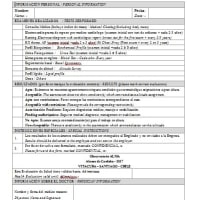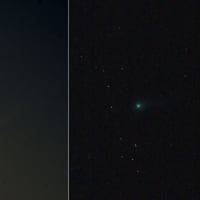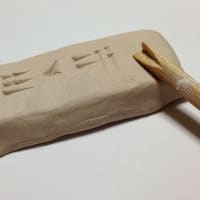
スミソニアアン航空宇宙博物館に展示されていたもの。
世界最初に実用化された、V2弾道ミサイルの慣性航法装置。
弾道ミサイルは発射地点から、あらかじめ定められた着弾地点への飛行に関して、ロケット内部のジャイロコンパスによる方位の測定によって、ロケットモーターが始動中は噴射口の微妙な噴出方向の補正をおこなって方位を着弾目的地に定める。
そして発射地点から着弾地点までの、あらかじめ予定された距離を飛行するため、どの高さでロケットエンジンを停止して、その後弾道飛行に移るかをロケット内部で決定しなければいけない。
そのためのロケット内部にある加速度計のデータを積分計算をするアナログ計算機が必要となる。
From Wiki(PIGA accelerometer)
The PIGA was based on an accelerometer developed by Dr Fritz K Mueller, then of the Kreiselgaraet Company, for the LEV-3 and experimental SG-66 guidance system of the Nazi era German V2 (EMW A4) ballistic missile and was known among the German rocket scientists as the MMIA "Mueller Mechanical Integrating Accelerometer". This system used precision electrical contacts to actuate the torque motor and achieved an accuracy of 1 part in 1000 to 1 part per 10000 known in technical parlance as a scale error of 1000 to 100. This was equivalent to about 600m of accuracy over the V2 1500m/s speed and 320km flight. Since the number of shaft rotations represented speed a cam switch was used to initiate missile control sequences such as engine throttle down and shut off. PIGA accelerometers mounted in the AIRS (Advanced Inertial Reference Sphere) are part of most accurate inertial navigation (INS) developed for the MX Missile. The INS drift rates are less than 1.5 x 10-5 degrees per hour of operation, about 8.5m per hour with the overall accuracy of the missile effected more by defects in the gravitational maps.
A recovered MMIA accelerometer from an unexploded V2 was presented to Dr Charles Stark Draper of the United States's MIT instrumentation lab who had been developing the basis of inertial navigation for aircraft by initially concentrating efforts on achieving extremely low drift rate gyroscopes known as a floated integrating gyroscope. Draper combined ideas from his integrating gyroscopes, which were mounted in cans that floated in fluids that were held in place by jeweled bearings, with the recovered V2 accelerometer by floating the pendulum-gyroscope portion. The more generic name of PIGA was suggested by Dr Draper due to the addition of various refinements such as electromagnetic or optical sensing of pendulum position. Such accelerometers were used in the Titan II and Polaris Systems and Minuteman systems. At the Redstone Arsenal (later renamed the Marshall Flight Center) near Huntsville Alabama the contingent of ex German rocket scientists which had been brought into the United States under Operation Paperclip, including Dr Mueller, continued to refine their original instruments in conjunction with American engineers and scientists. At the suggestion of Dr Mueller, the technically difficult task of replacing the original ball bearings with gaseous bearings was achieved. Initially compressed nitrogen was used but later fluorocarbons which had the advantage of being recyclable on board the missile or aircraft during extended waiting periods was used. Hence US accelerometers either consisted of the floated type or the gaseous bearing type with the US Army and US Space program relying on the later type of instrument.

























